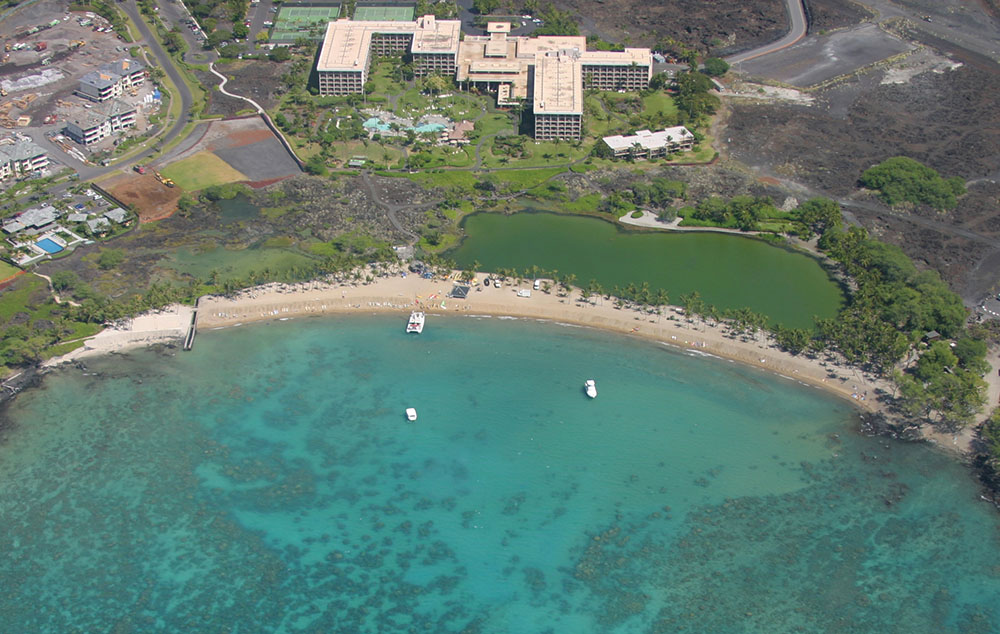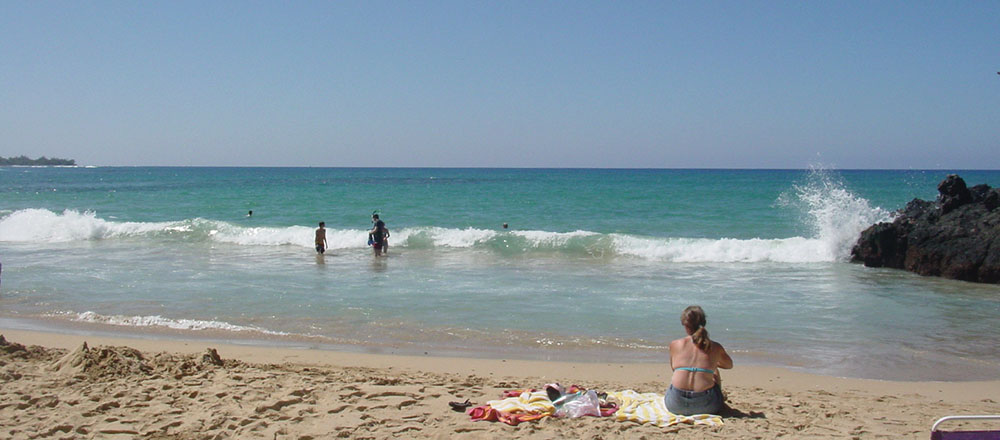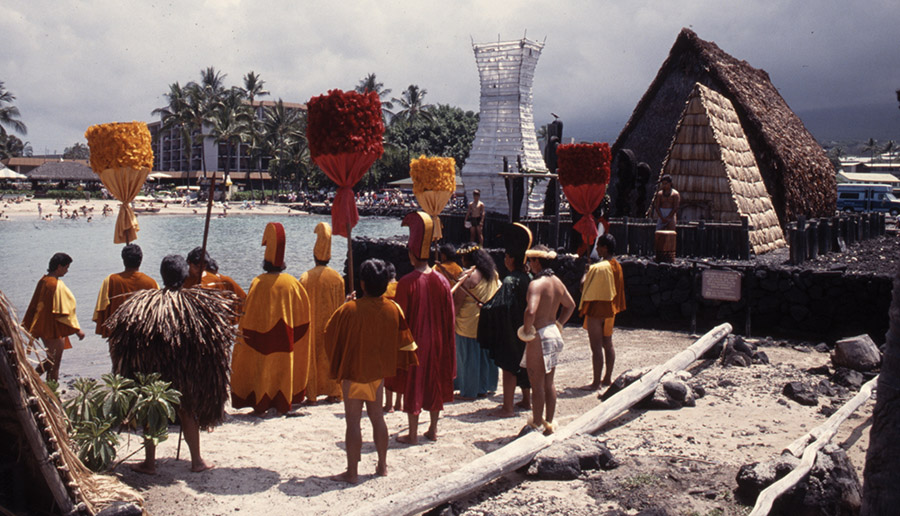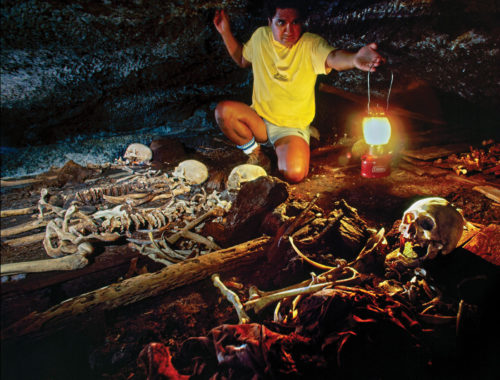Each Place has a Voice of its Own

By Ku‘ulei Keakealani
Place names in Hawai‘i are important for many reasons. Above all, it is to honor this homeland, its native language, people, and heritage. Despite the nicknames that are regularly used in place of actual names, it is important that we learn and use the true names of places throughout Hawai‘i nei. Whether understood by some to the depth of its kaona (hidden meaning) or maybe just the surface knowledge of what it may potentially mean; I wish to encourage all to honor and respect Hawai‘i, by utilizing the real names of its places. It is with this thought in mind that I honor my homeland as well as the other landscapes throughout the world with the hope that we may relate to one another insofar as the code of communication continues with and through oration, as has been Hawai‘i’s longstanding tradition.
Voices

The “whoosh” heard as the wind blows through the branches of trees, the birds that chirp to a rhyme and rhythm all their own, perhaps the leaves that crackle or the branches that creak, gives me the impression that I am hearing the voices of the forest. The rumble of waves that crash against the rocky shore, the smell of salt air that I feel blow against my body and wet my skin, the sound of many grains of sand being moved through my fingers as I squeeze them, leaves an impression in me that I am hearing the voices of the sea.
Just as you and I have distinct and unique voices, so too does each and every place. Known intimately by those whose eyes look, whose ears hear, and whose hearts fill with tenderness because it is familiar—a closeness—a love.
What are the voices of your place? The real and true voices? Not the voices of hustle and bustle, of horns blaring, of people rushing, of everything and anything. Rather, that which was created by the hand of a higher power, creator—creation!
The voices of the desert, a waterfall, a stream, or a river. The mountaintop, the crater floor, the vast and open ocean. So many voices for us to hear—but do we? Can we? Are we aware enough to hear? Far too often these voices are not heard, ignored by some, irrelevant to most. Isn’t that so? Isn’t that sad? A mere observation I offer.
If then, the code of communication is the spoken word, I ask about those voices that are ignored or irrelevant, who will be their voice?
Think about this. A native, almost extinct tree, rooted and grounded, cannot get up and remove itself from a raging fire or the chokehold of an invasive vine. Who then will be its voice?
Who will be the voice of the hill, scarred now for the rest of eternity, or worse yet, no hill in existence where it once stood.
Who will be the voice of the lava fields that will never have the ability to reveal the first liko bud that signifies new life or the mountaintop of a home to a surreal reality?

By these truths, however, you can begin to see that people and place are interconnected, interrelated—one, pili wehena ‘ole, an inseverable relation, connection!
The name of a place can alert us, dictate to us, and teach us about its significance or explain natural characteristics, and it also tells a story. Let us take, for example, the beach named Kalaemanō, literally, “the shark point.” If we focus on one word in the name, manō, meaning shark, we could ponder the thought that the beach may have strong correlations to sharks. If we separate out the first part of this place name, the word ka lae translates to the cape or point. Taking it a step further to understand the place itself, we see this coastal area here has many capes and points along its shoreline. When we learn the history of Kalaemanō, we understand that the geographical location is a part of a larger region of Kona ‘ākau (north Kona) called Kekahawai‘ole, or the waterless plains of North Kona. This coastal section of the ancient ahupua‘a (land division) of Ka‘upulehu was favored by ali‘i chiefs for its abundant fishing waters. A land still full of important resources, it is told in an ‘ōlelo no‘eau or wise proverb that speaks of this land and its riches from times past. This poetic saying is a direct reference to the aku and ‘opelu fishermen of the Kaha (Kekaha) lands of North Kona.
Ola akula ka ‘āina kaha, ua pua ka lehuai ke kai. The natives of the Kaha lands have life, when the lehua blossoms are upon the sea!
Petroglyphs carved by ancient Hawaiians are evidence of the journeys of our ancestors and can be still seen there today (Hawai‘i Forest Institute). Sources of place names are abundant and range from written documents to the spoken word: kūpuna (elders), kama‘āina (belonging to a particular land or place), Hawaiian language newspaper columns, and the wonderful resource book, Place Names of Hawai‘i, to name a few.
A Few Correct Names and Meanings
‘Anaeho‘omalu (A-Bay)
“Restricted Mullet”
‘anae (a full-sized mullet fish)
ho‘omalu (to put something under protection or restriction)
This is where mullet reserved for the ali‘i were kept and fattened.
Hokū‘ūla (Buster Brown)
“Red Star”
A function in astronomical observation/calculations.
Kauhola (Lighthouse)
To unfold something, like a blanket.
To bloom open like a flower.
Kohanaiki (Pine Trees)
“Small Barrenness”
A small area that is barren
Lanimaomao (Lakeland)
“Increasing Heaven”
Maka‘eo (Old A’s/Old Airport)
“Angry Appearing”
‘O‘oma (OTEC)
“Concave”
Waialea (Beach 69/69s)
“Water of Lea”
Lea is a goddess of wa‘a (canoe) makers.

Echo
I close with a “voice” of encouragement to us all to utilize the names as intended by the people who named them. Thus, when we say a name like “Kalaemanō,” we pay homage to the story that preceded our own—a story necessary to the perpetuation of our own. For in the end, we all become stories. A nickname is not bad in the least bit; most of us have them—hopefully not at the expense of our real names. What’s at stake? The next generation, and beyond, knowing only the nickname of a place. Herein lies the transmittal of knowledge: it’s in our hands. Shall we not be the generation gap? As for me, I choose to be a bridge in the hope that others may move forward in kind rather than carve a generation gap.
Me ka ha‘aha‘a (with humility),
Ku‘ulei Keakealani ❖
Contact writer Ku‘ulei Keakealani: kuumehananani@yahoo.com
Resources: HawaiiForestInstitute.org
Place Names of Hawai‘i by Mary Kawena Pukui


